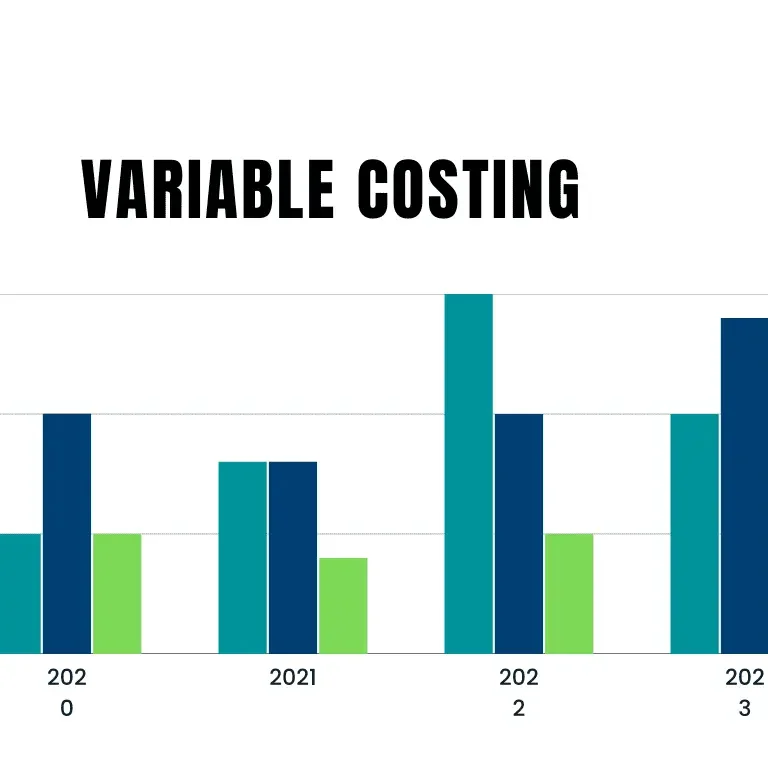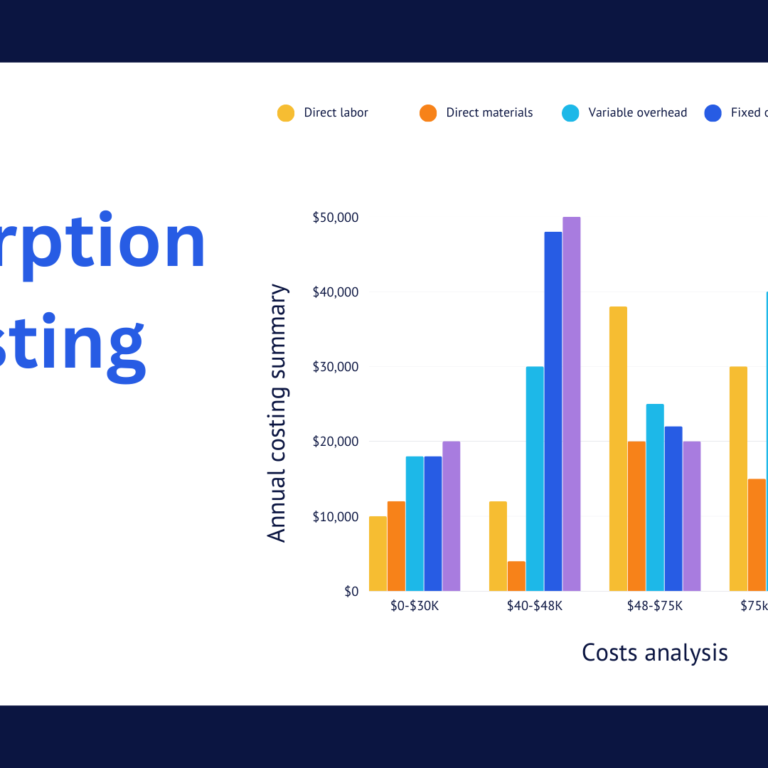Introduction
Accurate costing methods play a pivotal role in calculating manufacturing overhead, offering valuable insights into the true cost of production and enabling informed decision-making for businesses. Manufacturing overhead refers to the indirect costs incurred in the production process, such as rent, utilities, depreciation, and supervision. These costs are not easily traceable to specific products or processes and require effective allocation methods.
Inaccurate costing methods can lead to significant consequences for organizations. Flawed cost calculations can result in incorrect product pricing, leading to lost profits or missed sales opportunities. Moreover, misallocated resources due to inaccurate costing can lead to inefficiencies, wasted resources, and reduced overall productivity. In addition, decision-makers rely on cost data to assess profitability, evaluate performance, and make strategic decisions. If the cost data is inaccurate, it can lead to misguided decisions that can impact the long-term viability of the business.
Therefore, implementing accurate costing methods is essential for organizations to gain a comprehensive understanding of their manufacturing overhead, optimize resource allocation, improve cost management, and drive profitability.
Definition of manufacturing overhead
Manufacturing overhead refers to indirect costs incurred during the production process that cannot be directly attributed to a specific product or unit of production. These costs are necessary for the overall operation of the manufacturing facility and include expenses such as rent, utilities, equipment maintenance, factory supervision, and depreciation.
Unlike direct costs (such as direct materials and direct labor), which are directly attributable to specific products, manufacturing overhead costs are incurred to support the production process as a whole. Proper allocation and calculation of manufacturing overhead are crucial for accurately determining the total cost of production, establishing product pricing, and making informed business decisions.
Importance of accurate costing methods
Accurate costing methods are of paramount importance for businesses. They provide a clear understanding of the costs associated with manufacturing operations, enabling precise product pricing, profitability analysis, and cost control. Accurate cost data helps businesses make informed decisions regarding resource allocation, capacity planning, and product mix optimization.
It facilitates the identification of cost-reduction opportunities and supports effective budgeting and financial reporting. Accurate costing methods also enhance the overall competitiveness of businesses by ensuring that products are priced appropriately, reflecting their true costs and market value. Ultimately, accurate costing methods contribute to improved financial performance and sustainable business growth.
The Impact of Inaccurate Costing Methods
Inaccurate product pricing and profitability analysis
Inaccurate product pricing and profitability analysis can have a significant impact on a business. Underestimating the cost of producing a product may result in setting prices too low, leading to reduced profitability or even losses. On the other hand, overestimating costs can lead to inflated prices, making products less competitive in the market and potentially reducing sales.
Moreover, inaccurate costing can distort financial statements, mislead decision-making processes, and hinder strategic planning. Businesses must conduct accurate costing to ensure optimal pricing and maintain profitability.
Misallocation of resources and inefficiencies
The misallocation of resources and inefficiencies caused by inaccurate costing can have a significant impact on businesses and the economy. When costs are inaccurately estimated, it can lead to poor decision-making regarding pricing, production, and investment. This can result in overpricing or underpricing of products, inefficient allocation of resources, and overall reduced profitability.
Moreover, inaccurate costing can hinder effective cost control and budgeting, leading to financial instability and potential business failures. Accurate costing is essential for optimizing resource allocation, maximizing profitability, and maintaining a competitive edge in the market.
Decision-making based on flawed cost data
Inaccurate costing can have significant impacts on decision-making processes. When decisions are made based on flawed cost data, it can lead to incorrect pricing strategies, inefficient resource allocation, and distorted profitability analysis. This can result in financial losses, missed opportunities, and reduced competitiveness for businesses.
Moreover, inaccurate costing may hinder accurate budgeting and forecasting, making it difficult to plan for future growth and make informed strategic decisions. Therefore, it is crucial to ensure the accuracy and reliability of cost data to make sound and effective decisions.
Benefits of Accurate Costing Methods
Precise product costing and pricing decisions
Accurate costing methods provide several benefits, including precise product costing and pricing decisions. By accurately capturing all costs associated with the production process, businesses can determine the true cost of their products. This enables them to establish competitive and profitable pricing strategies, ensuring that the prices set cover all expenses and generate adequate profit margins.
Accurate costing also helps in identifying cost-saving opportunities, optimizing resource allocation, and improving overall cost efficiency. Moreover, precise product costing facilitates informed decision-making regarding product development, production volume, and sales strategies.
Effective resource allocation and capacity planning
Accurate costing methods offer several benefits for effective resource allocation and capacity planning. By accurately determining the cost of resources, businesses can allocate them efficiently, ensuring that the right amount of resources is available when needed. This helps in avoiding overallocation or underutilization of resources, leading to optimal production and cost management.
Accurate costing also enables businesses to identify bottlenecks and capacity constraints, allowing them to make informed decisions regarding capacity expansion, outsourcing, or process improvements to meet customer demand and maximize profitability.
Identification of cost reduction opportunities
Accurate costing methods enable businesses to identify cost-reduction opportunities more effectively. By accurately determining the costs associated with various processes, activities, and products, organizations can pinpoint areas where expenses can be minimized. This helps in streamlining operations, eliminate wasteful practices, and optimize resource utilization.
Accurate costing methods provide a clear understanding of cost drivers, allowing businesses to prioritize and target specific areas for improvement. This can lead to increased efficiency, enhanced profitability, and a competitive advantage in the market by offering products or services at lower costs.
Enhanced financial reporting and compliance
Accurate costing methods provide several benefits, one of which is enhanced financial reporting and compliance. By accurately determining the costs associated with products, services, or projects, businesses can generate more reliable financial statements that accurately reflect their profitability and financial health. This promotes transparency and helps ensure compliance with accounting standards and regulations.
Accurate costing also enables businesses to assess their cost structure, identify cost-saving opportunities, and make informed pricing decisions. Ultimately, it contributes to better financial management and improves the overall decision-making process within an organization.
Techniques for Accurate Costing Methods
Direct costing
Direct costing, also known as variable costing or marginal costing, is a costing method that focuses on identifying and allocating only the variable costs directly associated with the production of goods or services. This approach excludes fixed manufacturing overhead costs, such as rent and utilities, from product costs. Instead, fixed costs are treated as period costs and are expensed in the period incurred.
Direct costing provides valuable insights into the cost behavior of products and helps in calculating the contribution margin, which is the difference between sales revenue and variable costs. It aids in decision-making, pricing strategies, and assessing the profitability of different products or services. However, direct costing may not be suitable for external financial reporting purposes as it does not comply with generally accepted accounting principles (GAAP).
Activity-Based Costing (ABC)
Activity-Based Costing (ABC) is a costing method that allocates costs to specific activities or cost drivers based on their consumption of products or services. Unlike traditional costing methods that rely on volume-based allocation, ABC takes into account the complexity and diversity of activities involved in the production process. It helps identify the cost drivers that directly influence the consumption of resources, providing a more accurate and detailed picture of the cost structure.
ABC enables businesses to allocate costs more accurately, assess the profitability of individual products or services, identify areas of inefficiency, and make informed decisions about pricing, product mix, and process improvement. It is particularly beneficial for organizations with diverse product lines, complex processes, or high overhead costs.
Standard costing
Standard costing is a costing method that establishes predetermined cost standards for various inputs, such as materials, labor, and overhead, which are then compared to actual costs incurred during production. It involves setting standard costs for each element of production based on historical data, industry benchmarks, or management estimates.
By comparing actual costs to the predetermined standards, organizations can identify and analyze any deviations or variances, allowing for effective cost control and performance evaluation. Standard costing provides a benchmark for evaluating efficiency, identifying cost-saving opportunities, and making informed decisions about pricing, budgeting, and resource allocation. It facilitates better planning, budgeting, and decision-making by providing a framework for measuring and managing costs within an organization.
Job order costing
Job order costing is a costing method used by companies that produce customized or unique products or services. It involves allocating costs to individual jobs or projects based on their specific characteristics and requirements. Each job is treated as a separate cost unit, and costs such as materials, labor, and overhead are tracked and assigned to each job.
Job order costing provides accurate cost information for each job, enabling businesses to determine the profitability of individual projects, assess customer pricing, and make informed decisions about resource allocation. It is commonly used in industries such as construction, manufacturing, printing, and custom manufacturing where products or services are tailored to meet specific customer specifications.
Factors Affecting Costing Method Selection
Complexity of manufacturing processes
The complexity of manufacturing processes is a crucial factor in selecting a costing method. If a company has straightforward manufacturing processes with minimal variations, it may opt for a simpler costing method such as direct costing. On the other hand, if the manufacturing processes are complex, involve multiple activities, and require detailed cost tracking, an activity-based costing (ABC) method may be more appropriate.
The level of complexity influences the accuracy and granularity of cost allocation required, and thus, guides the selection of the most suitable costing method to ensure accurate cost measurement and decision-making.
Variability of products or services
The variability of products or services is a crucial factor affecting the selection of a costing method. If the products or services offered by a company exhibit high variabilities, such as customization, diverse production processes, or unique features, a costing method that can accurately capture and allocate costs to individual units or jobs may be preferred.
Methods like job order costing or activity-based costing (ABC) are often suitable in such cases as they allow for a more precise allocation of costs based on the specific characteristics and requirements of each product or service, resulting in more accurate cost calculations and decision-making.
Availability and reliability of data
The availability and reliability of data are significant factors influencing the selection of a costing method. The chosen costing method should rely on accurate and up-to-date data to ensure the credibility and usefulness of cost information. If data is limited, incomplete, or unreliable, it can hinder the effectiveness of certain costing methods.
For example, activity-based costing requires detailed information on activities and their costs, while standard costing relies on historical data for setting predetermined standards. Therefore, organizations must consider the availability and reliability of data when selecting a costing method to ensure accurate and meaningful cost calculations and analysis.
Alignment with organizational goals and strategies
When selecting a costing method, one important factor to consider is its alignment with organizational goals and strategies. The chosen costing method should support the company’s objectives and provide relevant information for decision-making.
For example, if the organization aims to enhance cost control and efficiency, a method like standard costing may be suitable. If the focus is on accurately allocating costs to different activities or products, activity-based costing (ABC) could be the preferred approach. By aligning the costing method with organizational goals and strategies, companies can ensure that the chosen method provides meaningful insights and supports effective decision-making processes.
Implementing Accurate Costing Methods
Ensuring data accuracy and completeness
Implementing accurate costing methods requires ensuring data accuracy and completeness. This involves conducting regular audits and checks to verify the accuracy of cost data inputs, such as material costs, labor hours, and overhead expenses. It is important to establish robust data collection and recording processes that capture all relevant costs associated with the production process.
Additionally, organizations should ensure that all cost data is complete, meaning that no costs are omitted or overlooked. This can be achieved by implementing effective data management systems, employing skilled personnel, and promoting a culture of accuracy and attention to detail throughout the organization.
Regular review and adjustment of cost drivers
To implement accurate costing methods, it is essential to regularly review and adjust cost drivers. Cost drivers are factors that influence the consumption of resources and determine the costs associated with specific activities or products. By periodically assessing and updating cost drivers, businesses can ensure that their costing methods reflect the most current and relevant information.
This includes considering changes in technology, production processes, market conditions, and resource utilization patterns. Regularly reviewing and adjusting cost drivers helps maintain the accuracy of cost allocations, improves the reliability of cost data, and enhances the overall effectiveness of the costing system.
Integration of costing methods with accounting systems
Implementing accurate costing methods involves integrating these methods with accounting systems. This integration ensures that the costing methods are seamlessly incorporated into the overall financial management processes of the organization. By integrating costing methods with accounting systems, businesses can automate data collection, streamline cost allocation processes, and reduce the chances of errors or inconsistencies.
It allows for real-time tracking of costs, facilitates accurate financial reporting, and enables effective cost analysis. Integration also promotes data integrity and consistency, as information flows smoothly between different systems, providing a holistic view of costs throughout the organization.
Challenges and Considerations
Overhead cost allocation challenges
Overhead cost allocation presents several challenges for organizations. One challenge is determining the appropriate allocation base for overhead costs, as different allocation bases can lead to different cost allocations and affect decision-making. Additionally, accurately measuring and tracking the usage of overhead resources can be complex, especially when multiple departments or activities share the same resources.
Allocating overhead costs to specific products or services may also be challenging when there is a lack of direct cause-and-effect relationships. Furthermore, changes in production volumes or activities can impact the accuracy of overhead cost allocations, requiring constant monitoring and adjustment of allocation methods.
Accounting for indirect costs
Accounting for indirect costs, also known as overhead costs, is crucial for organizations to accurately determine the total cost of producing goods or services. Indirect costs include expenses such as rent, utilities, administrative salaries, and maintenance costs, which are not directly attributable to specific products or services.
These costs are typically allocated to products or services based on a predetermined allocation method, such as using a cost driver or allocating based on direct labor hours. Proper accounting for indirect costs ensures that they are appropriately assigned to cost objects, enabling accurate pricing, profitability analysis, and informed decision-making within the organization.
Conclusion
Accurate costing methods are of paramount importance in calculating manufacturing overhead costs. Manufacturing overhead encompasses various indirect costs, such as factory rent, utilities, and equipment maintenance, which are not directly tied to specific products or processes. Accurate costing methods allow for proper allocation and tracking of these costs to individual products or operations, enabling a more precise determination of product costs and overall profitability.
This information is vital for effective decision-making, such as pricing strategies, product mix analysis, and cost control measures. Without accurate costing methods, organizations risk misjudging product costs, leading to incorrect pricing, suboptimal resource allocation, and potential financial losses. Therefore, accurate costing methods are essential for sound financial management and strategic decision-making in manufacturing operations.




